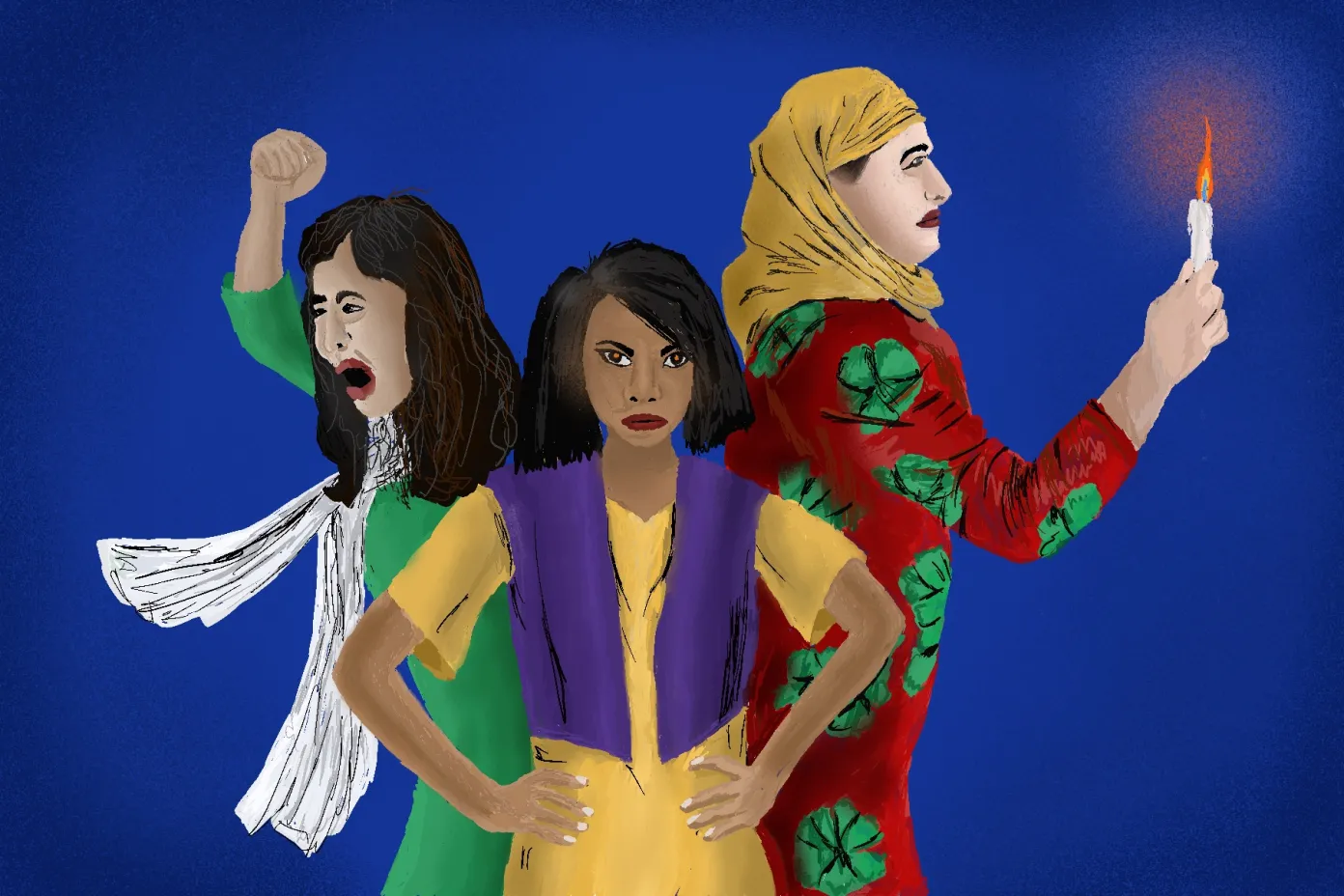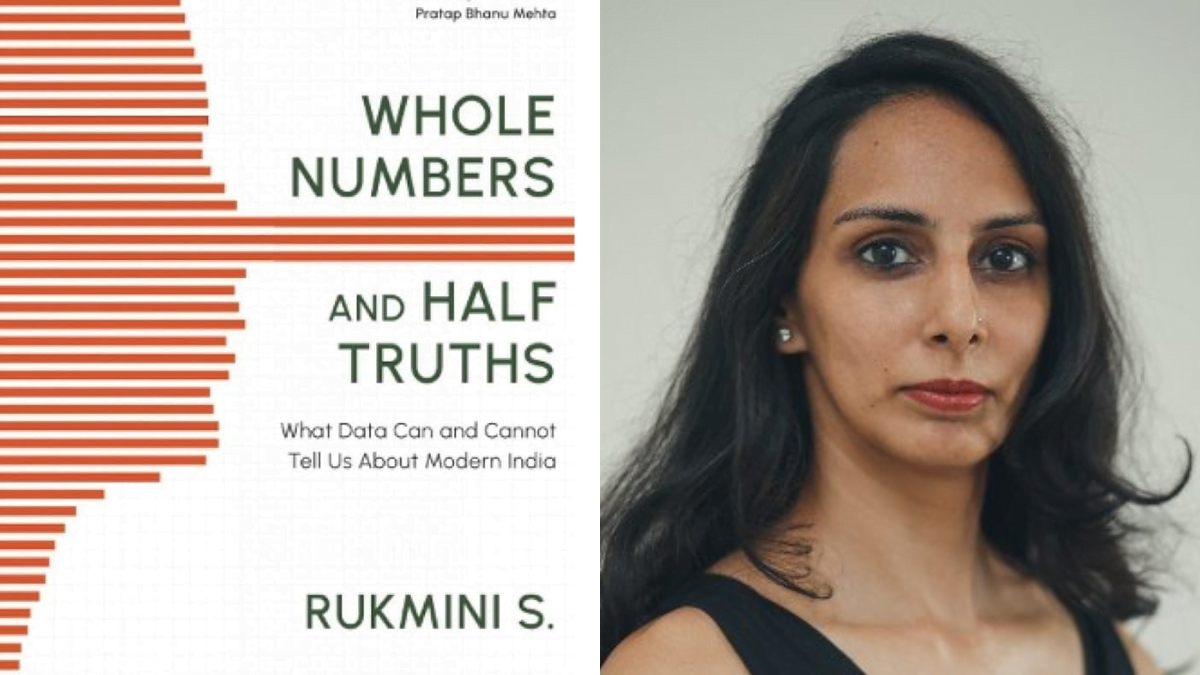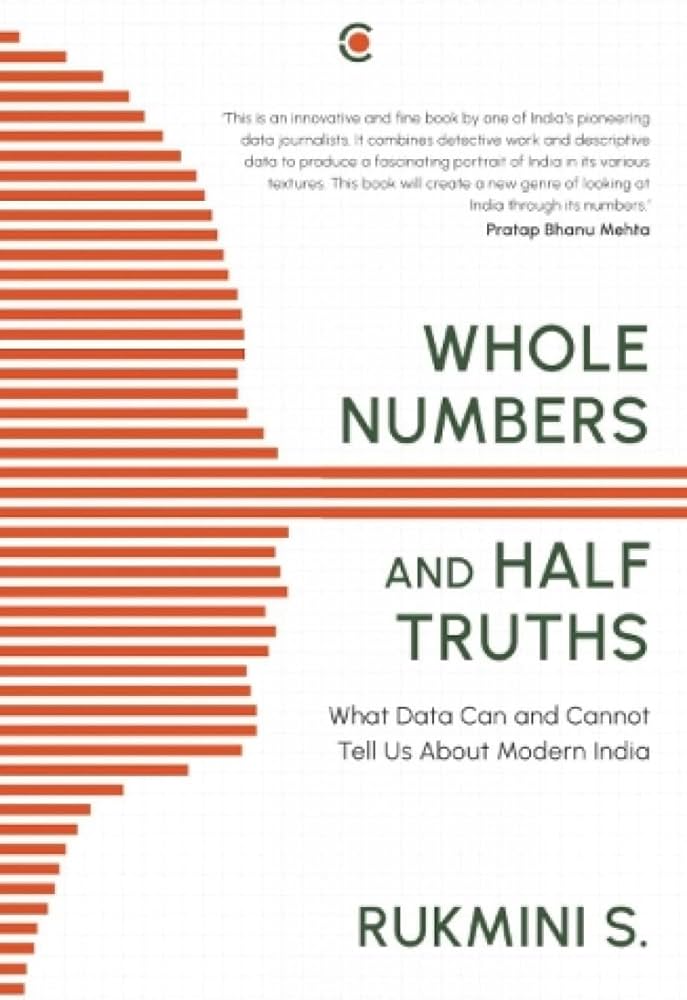Rukmini S’s Whole Numbers and Half Truths: What Data Can and Cannot Tell Us about Modern India is a compelling exploration of India’s socio-political landscape through the lens of data journalism. With meticulous research and insightful analysis, Rukmini dismantles entrenched narratives and challenges conventional wisdom about Indian society.
With meticulous research and insightful analysis, Rukmini dismantles entrenched narratives and challenges conventional wisdom about Indian society.
Rukmini S, a Chennai-based data journalist, embarked on her journalism journey in 2004 by covering Mumbai for the Times of India. Transitioning to data journalism in 2010, she became India’s pioneering data editor.
Rukmini’s book covers ten chapters, each delving into various aspects of India. The first three explore how Indians interact with law enforcement, perceive the world, and vote. The next trio examines our social lives, finances, and work patterns. The following three discuss employment, aging, and residential patterns. The final chapter focuses on India’s healthcare system.
While each chapter presents data, it also emphasises that data has limitations and cannot fully capture reality. It underscores the need to analyse data carefully, recognising its imperfections. Ultimately, data provides insights but doesn’t depict the full picture due to its abstract nature.
The book begins by examining the tendency of individuals to form opinions based on anecdotal experiences rather than empirical evidence. Rukmini asserts that many widely accepted narratives are, in fact, fabrications disguised as facts. She highlights the importance of scrutinising the sources of influence and interrogating established beliefs.
Challenging conventional wisdom in Rukmini S’s Whole Numbers and Half Truths
Unlike traditional approaches that often gloss over the complexities within datasets, Rukmini’s work meticulously dissects the intricacies embedded within the numbers, unraveling the stories they tell and the narratives they obscure. Through her extensive engagement with ground-level realities and firsthand interactions, Rukmini brings to light the nuances and intricacies that shape the socio-economic landscape of India.
What sets Rukmini’s scholarship apart is her ability to navigate the political and social pressures that often influence data collection and interpretation. She deftly unpacks the biases and agendas that may distort statistical representations, urging readers to critically interrogate the veracity of the numbers presented to them.
The author unveils a landscape shaped by urbanisation, migration, and societal shifts.
The author unveils a landscape shaped by urbanisation, migration, and societal shifts. Contrary to popular belief, the author argues that India’s growth is not solely defined by urban prosperity and a progressive middle class. Instead, she delves into the complexities of data compilation and the inherent biases within, shedding light on the realities often overlooked in public discourse.
Understanding the realities of crime data
One of the book’s standout chapters is its examination of crime statistics. Rukmini sheds light on the practices of institutions like the National Crime Records Bureau, revealing how data manipulation distorts our understanding of crime trends. She reveals that the NCRB records the most severe offense among a series of crimes a person has been charged with. For instance, a fatal sexual assault in Delhi was categorised as murder rather than sexual assault.

However, Rukmini argues that this approach only reflects reported crimes. Many incidents go unreported due to various reasons such as victims feeling their complaints aren’t significant enough or lacking faith in police assistance. Surprisingly, Rukmini suggests that states with higher reported crime rates might have better reporting mechanisms in place. She attributes this partly to the composition of the police force, noting that increased female representation tends to lead to higher reporting of gender-based violence, citing Kerala as an example.
Furthermore the author addresses the challenges of comparing crime statistics across different regions and states in India. She unpacks the complexities of classification within the legal data system, underscoring the need for greater standardisation and transparency. She advocates for a more holistic understanding of crime dynamics, one that takes into account broader socio-economic factors and emphasises the importance of triangulating official statistics with independent surveys and qualitative research to gain a more comprehensive understanding of crime trends.
The second chapter of the book, titled “What India Thinks, Feels and Believes,” is particularly insightful. It highlights India’s conservative nature and the challenges in bringing about change. The chapter explores Indians’ perspectives on democracy, authoritarianism, freedom of speech, gender, religion, and caste. The findings reveal some concerning trends, such as a decreasing emphasis on democracy compared to other countries.
Another chapter, “Eat, Pray, Enjoy, Love, Marry — How India Lives Life,” discusses marriage patterns, showing low rates of inter-religious and inter-caste marriages. However, a poignant observation from one interviewee stands out: the data reflects marriage choices, not necessarily love connections. Many people may have experienced love across caste or religious lines, but this isn’t always reflected in marriage statistics.
Healthy skepticism in Rukmini S’s text
In the chapter addressing public health, the book highlights a critical issue: the inadequacy of data collection in India during the pandemic. It points out deliberate efforts to suppress accurate Covid-19 figures, perpetuating the illusion of low mortality rates and effective government handling. Despite India’s claims, there was little evidence supporting these assertions, as data manipulation was rampant.

Rather than addressing these data collection deficiencies, the pandemic exacerbated them. Recent WHO reports confirming India’s high mortality rates and hidden deaths only validate the concerns raised in the book. It sheds light on the reliance on private initiatives for accurate data, illustrating the shortcomings of institutional systems in health matters.
Rukmini S emphasises the urgent need to rectify these institutional failings to improve data collection in health, hospitalisation, and illness. The book suggests that fostering a dialogue rooted in data could bridge the divide between political factions in India. Furthermore, it delves into the mishandling of the second COVID wave and the underestimated number of migrant workers during the 2020 crisis.
The misrepresentation of death figures, coupled with an inadequate healthcare system and uninformed government response, led to underreported deaths and backlash against migrant workers. This could have been prevented had statistical researchers in India been more open to correcting errors.
Rukmini’s examination of religion in her book also presents intriguing insights. She observes that voting patterns still heavily reflect religious and caste affiliations, contributing to societal polarisation. Interestingly, while individuals may harbor no ill will towards those of different faiths, they often prefer to reside and marry within their own communities. However, this trend can lead to the segregation of Muslim communities, fostering a sense of ghettoisation. Despite a lack of overt ostracism, this preference for homogeneity within social groups paints a concerning picture of societal dynamics.
A 2014 survey revealed that over half of the wealthy and 40% of the impoverished classify themselves as middle class.
The book challenges many common misconceptions. Firstly, a significant majority of Indians identify as non-vegetarians. Secondly, despite many considering themselves middle class, data suggests otherwise. A 2014 survey revealed that over half of the wealthy and 40% of the impoverished classify themselves as middle class.

Lastly, the disparity in fertility rates between Muslims and Hindus is decreasing, primarily due to a more rapid decline in Muslim fertility. Notably, Muslim fertility rates in southern states are lower than those of Hindus in the Gangetic belt, highlighting regional variations. Moreover, concerns about high Muslim fertility rates are primarily confined to states with elevated fertility rates across all demographics.
One notable strength of Whole Numbers and Half Truths lies in its methodological rigor and theoretical framework. Rukmini S meticulously employs data journalism techniques, drawing on nearly two decades of on-the-ground reporting experience. Her adept use of qualitative and quantitative methodologies allows for a comprehensive analysis of complex social phenomena.
Moreover, Rukmini’s theoretical approach transcends traditional disciplinary boundaries, integrating insights from sociology, political science, and economics.
Moreover, Rukmini’s theoretical approach transcends traditional disciplinary boundaries, integrating insights from sociology, political science, and economics. This interdisciplinary lens enriches the book’s analytical depth, offering readers a nuanced understanding of the intricacies of Indian society. Her methodological prowess and theoretical sophistication make Whole Numbers and Half Truths a standout contribution to the field of data-driven journalism.
In today’s age of information overload, Whole Numbers and Half Truths is a must-read for everyone. This book serves as a timely reminder of the importance of critical thinking and skepticism in navigating the deluge of data that inundates our daily lives. By equipping readers with the tools to interrogate data narratives and discern fact from fiction, this book empowers individuals to become informed and engaged citizens in an increasingly data-driven world.
About the author(s)
Aamir Raza is a dedicated researcher based in New Delhi, India. He holds a Master's degree in Political Science from Jamia Millia Islamia University, New Delhi. He has been previously associated with Lokniti-CSDS and the Institute of Perception Studies as a Researcher. His areas of research interest include Electoral politics, representation, minority studies, ethnic politics and democratisation.






